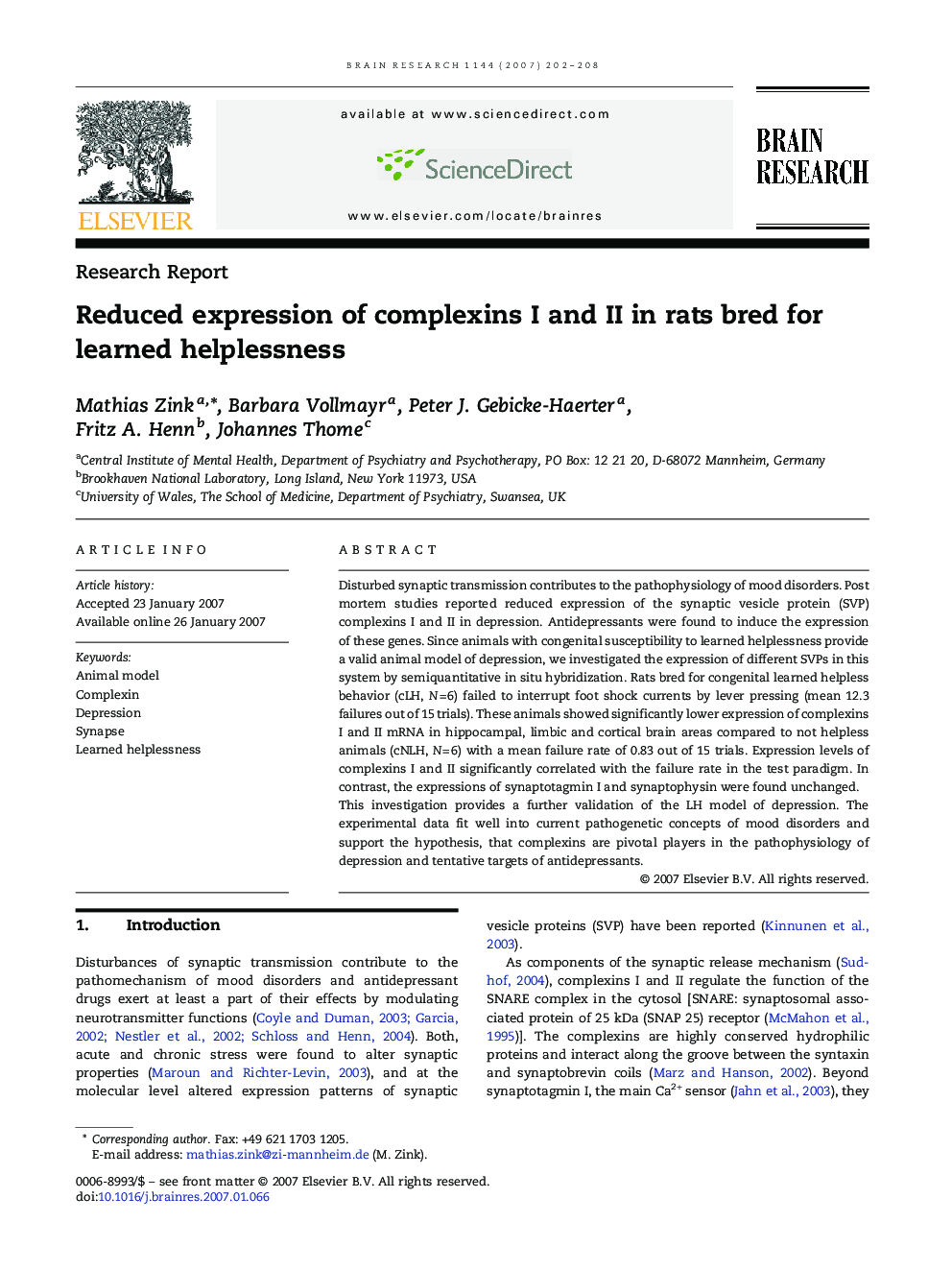| Article ID | Journal | Published Year | Pages | File Type |
|---|---|---|---|---|
| 4331155 | Brain Research | 2007 | 7 Pages |
Disturbed synaptic transmission contributes to the pathophysiology of mood disorders. Post mortem studies reported reduced expression of the synaptic vesicle protein (SVP) complexins I and II in depression. Antidepressants were found to induce the expression of these genes. Since animals with congenital susceptibility to learned helplessness provide a valid animal model of depression, we investigated the expression of different SVPs in this system by semiquantitative in situ hybridization. Rats bred for congenital learned helpless behavior (cLH, N = 6) failed to interrupt foot shock currents by lever pressing (mean 12.3 failures out of 15 trials). These animals showed significantly lower expression of complexins I and II mRNA in hippocampal, limbic and cortical brain areas compared to not helpless animals (cNLH, N = 6) with a mean failure rate of 0.83 out of 15 trials. Expression levels of complexins I and II significantly correlated with the failure rate in the test paradigm. In contrast, the expressions of synaptotagmin I and synaptophysin were found unchanged.This investigation provides a further validation of the LH model of depression. The experimental data fit well into current pathogenetic concepts of mood disorders and support the hypothesis, that complexins are pivotal players in the pathophysiology of depression and tentative targets of antidepressants.
